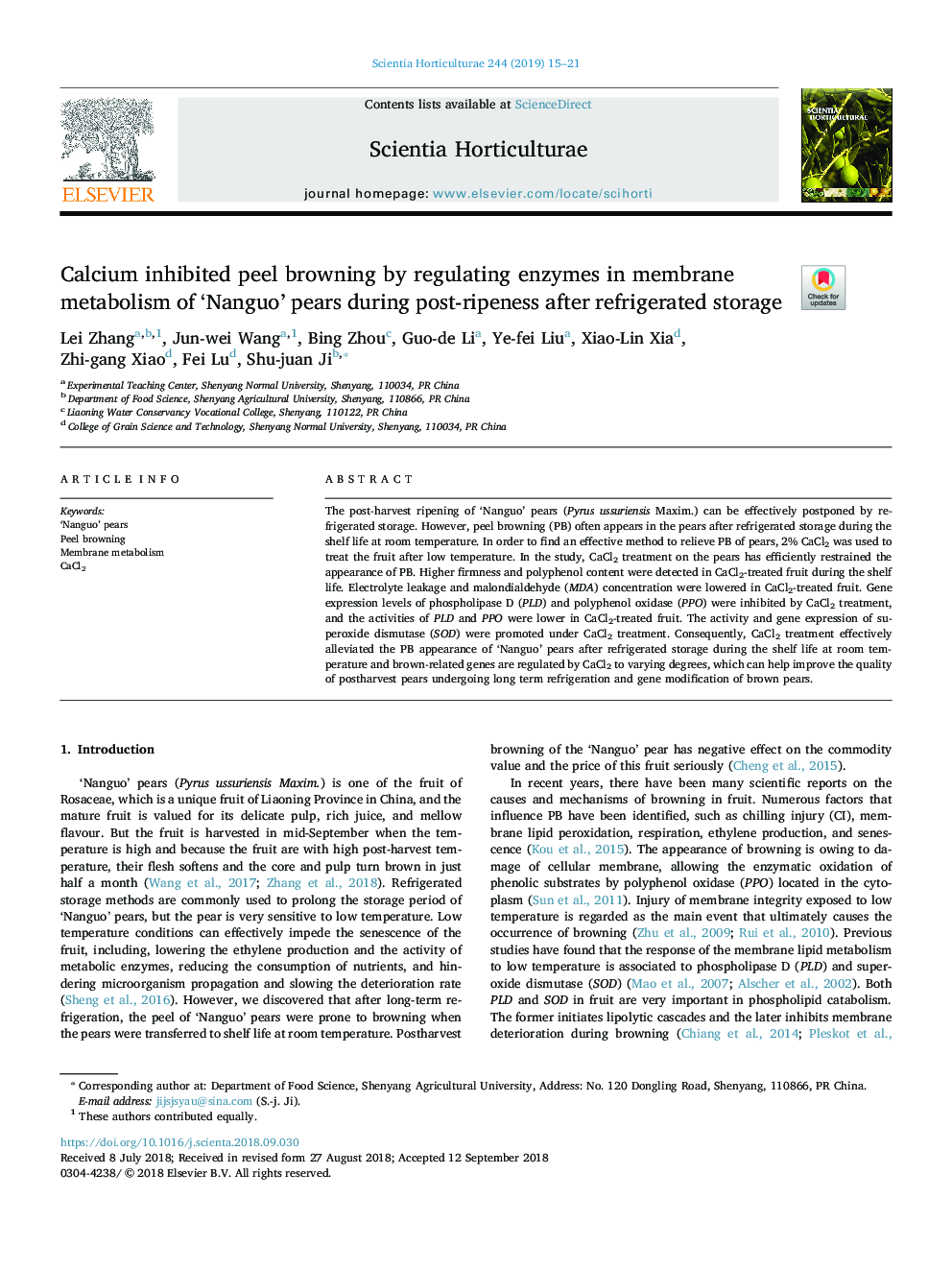| Article ID | Journal | Published Year | Pages | File Type |
|---|---|---|---|---|
| 10223954 | Scientia Horticulturae | 2019 | 7 Pages |
Abstract
The post-harvest ripening of 'Nanguo' pears (Pyrus ussuriensis Maxim.) can be effectively postponed by refrigerated storage. However, peel browning (PB) often appears in the pears after refrigerated storage during the shelf life at room temperature. In order to find an effective method to relieve PB of pears, 2% CaCl2 was used to treat the fruit after low temperature. In the study, CaCl2 treatment on the pears has efficiently restrained the appearance of PB. Higher firmness and polyphenol content were detected in CaCl2-treated fruit during the shelf life. Electrolyte leakage and malondialdehyde (MDA) concentration were lowered in CaCl2-treated fruit. Gene expression levels of phospholipase D (PLD) and polyphenol oxidase (PPO) were inhibited by CaCl2 treatment, and the activities of PLD and PPO were lower in CaCl2-treated fruit. The activity and gene expression of superoxide dismutase (SOD) were promoted under CaCl2 treatment. Consequently, CaCl2 treatment effectively alleviated the PB appearance of 'Nanguo' pears after refrigerated storage during the shelf life at room temperature and brown-related genes are regulated by CaCl2 to varying degrees, which can help improve the quality of postharvest pears undergoing long term refrigeration and gene modification of brown pears.
Keywords
Related Topics
Life Sciences
Agricultural and Biological Sciences
Horticulture
Authors
Lei Zhang, Jun-wei Wang, Bing Zhou, Guo-de Li, Ye-fei Liu, Xiao-Lin Xia, Zhi-gang Xiao, Fei Lu, Shu-juan Ji,
